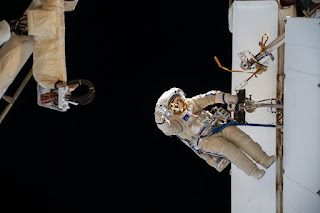April 26, 2024
MEDIA ADVISORY: M24-060
NASA to Provide Coverage as Dragon Departs Station with Science
The SpaceX Cargo Dragon resupply ship is pictured approaching the International Space Station carrying over 7,300 pounds of new science, supplies and solar arrays to replenish the Expedition 65 crew. The Cargo Dragon’s nose cone is open revealing its hatch and forward docking cone.
NASA and its international partners are set to receive scientific research samples and hardware as a SpaceX Dragon cargo spacecraft departs the International Space Station on Sunday, April 28 weather permitting.
The agency will provide coverage of undocking and departure beginning at 12:45 p.m. EDT on NASA+, NASA Television, the NASA app, YouTube, and the agency’s website. Learn how to stream NASA TV through a variety of platforms including social media.
Dragon will undock from the station’s zenith port of the Harmony module at 1:05 p.m. and fire its thrusters to move a safe distance away from the station after receiving a command from ground controllers at SpaceX in Hawthorne, California.
The spacecraft arrived at the station March 23 and delivered more than 6,000 pounds of research investigations, crew supplies, and station hardware after it launched March 21 on a SpaceX Falcon 9 rocket from Launch Complex 39A at NASA Kennedy.
After re-entering Earth’s atmosphere, the spacecraft will splash down off the coast of Florida. NASA will not broadcast the splashdown, but updates will be posted on the agency’s space station blog.
Dragon will carry back to Earth more than 4,100 pounds of supplies and scientific experiments designed to take advantage of the space station’s microgravity environment. Splashing down off the coast of Florida enables quick transportation of the experiments to NASA’s Space Systems Processing Facility at Kennedy Space Center in Florida, allowing researchers to collect data with minimal sample exposure to Earth’s gravity.
Scientific hardware and samples returning to Earth include Flawless Space Fibers-1, which produced more than seven miles of optical fiber aboard the space station. The investigation tests new hardware and processes for producing high-quality optical fibers in space and drew more than half a mile of fiber in one day, surpassing the previous record of 82 feet for the longest fiber manufactured in space.
Other studies include GEARS (Genomic Enumeration of Antibiotic Resistance in Space), which surveys the space station for antibiotic-resistant organisms. Genetic analysis could show how these bacteria adapt to space, providing knowledge that informs measures designed to protect astronauts on future long-duration missions.
Also returning on Dragon is MISSE-18 (Materials International Space Station Experiment-18-NASA), which analyzes how exposure to space affects the performance and durability of specific materials and components. MISSE-18 includes coatings, quantum dots, a lunar regolith simulant composite, and other materials. The samples returning home were exposed to the harsh environment of space for six months.
Additionally, samples from Immune Cell Activation will return to Earth for analysis. The ESA (European Space Agency) sponsored experiment seeks to understand whether microgravity influences the incorporation of magnetic nanoparticles into immune and melanoma cells. In this experiment, immune cells were modified with nano-vectors that are intended to carry therapeutic agents specifically to their target cells. Results could help develop novel therapeutics targeting central nervous system diseases and skin cancers such as melanoma.
These are just a few of the hundreds of investigations currently being conducted aboard the orbiting laboratory in the areas of biology and biotechnology, physical sciences, and Earth and space science. Advances in these areas will help keep astronauts healthy during long-duration space travel and demonstrate technologies for future human and robotic exploration beyond low Earth orbit to the Moon and Mars through NASA’s Artemis campaign.
Get breaking news, images and features from the space station on Instagram, Facebook, and X.
Learn more about the International Space Station at:
https://www.nasa.gov/international-space-station/
-end-
TO RECEIVE NASA NEWS RELEASES
NASA news releases and other information are available automatically by sending an e-mail to hqnews-join@newsletters.nasa.gov (no subject or text in the body is required).
To unsubscribe from the list, send an e-mail message to hqnews-leave@newsletters.nasa.gov (no subject or text in the body is required).










